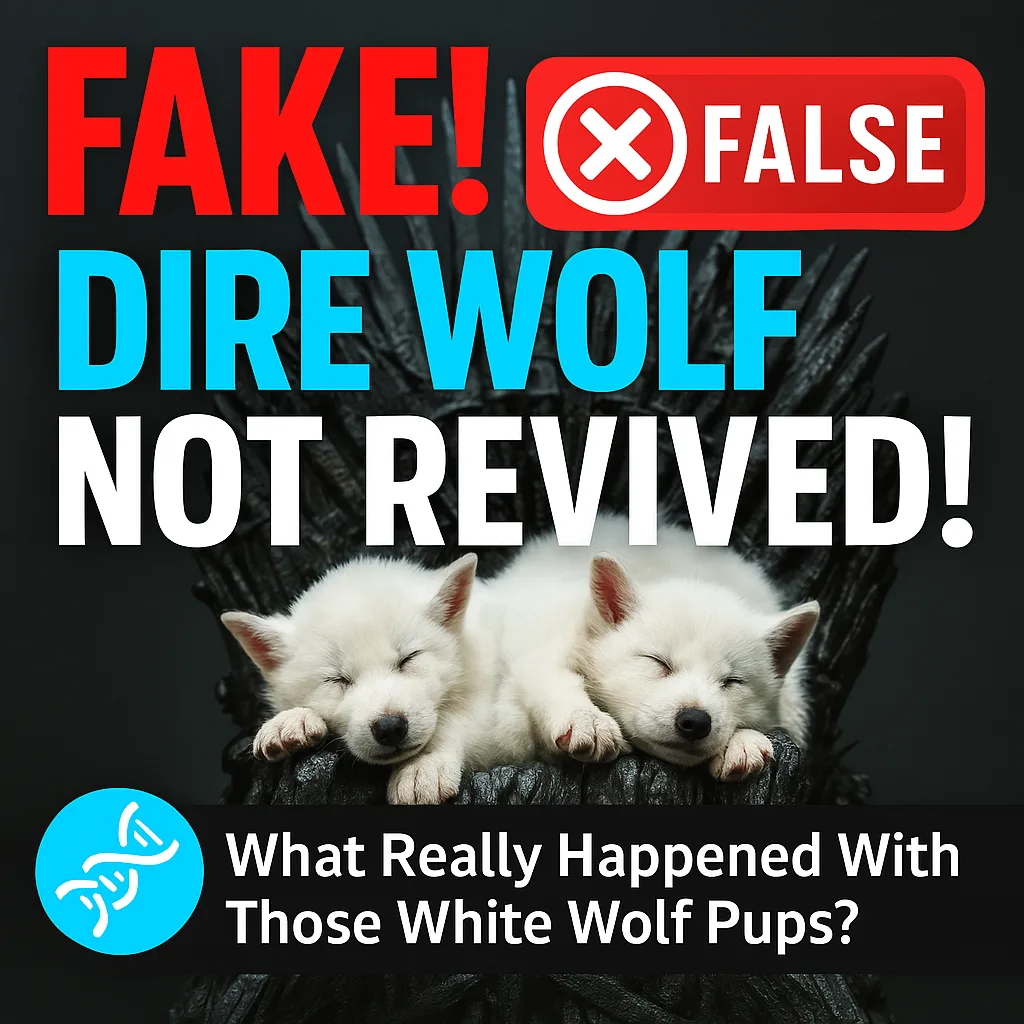
Lately, one topic has gone viral across social media:
“The Return of the Prehistoric Dire Wolf.”
Many pages are sharing photos of fluffy white wolf pups, claiming they’re “genetically revived Dire Wolves” brought back from extinction. But what’s the actual truth behind this?
Let’s dive in.
🐺 What Is a Dire Wolf?’
Dire Wolves were large, prehistoric carnivores that roamed North and South America and went extinct over 10,000 years ago. Thanks to Game of Thrones, where they featured prominently, the term “Dire Wolf” became a household name.
But recently, three white wolf pups were introduced to the world with the label “Revived Dire Wolves.” The company behind this bold claim? Colossal Biosciences – a firm known for its efforts in de-extinction science.
🔬 The Science Behind It – And What Really Happened
These pups were not cloned directly from a Dire Wolf. Instead, scientists used ancient DNA fragments collected from a 13,000-year-old tooth and a 72,000-year-old skull. That ancient DNA was compared to the genome of a modern Grey Wolf. Then, only 14 gene edits were made out of nearly 19,000 total genes.
👉 The result? A hybrid wolf, not a pure Dire Wolf.
These new pups look somewhat like the Dire Wolves of the past, but genetically, they are still over 99.9% Grey Wolf.
🧬 Why Are They Still Called Dire Wolves?
Here’s the twist.
The most prominent investor in Colossal Biosciences is none other than George R. R. Martin, the author of Game of Thrones. Labeling the pups as Dire Wolves helps generate massive publicity — not just for the company, but for the entire concept of de-extinction.
This marketing move has caused backlash among scientists worldwide.
Dr. Philip Seddon from the University of Otago explained:
“These are genetically edited Grey Wolves, not true Dire Wolves.”
Dr. Beth Shapiro, a geneticist at Colossal, even admitted:
“The goal is not to recreate the exact extinct species, but to create something that represents them.”
🧠 Why You Can’t Truly Revive an Extinct Species (Yet)
Ancient DNA degrades over time. Dr. Roland noted:
“Old DNA is like trying to use rotten wood to build furniture.”
In simple terms, you can’t make an exact copy of something when you’re missing most of the original material. What science can do — and is doing — is create hybrids that share similar characteristics with extinct animals.
It’s like crossbreeding a watermelon and a cucumber. You don’t get either one — you get a new hybrid called a Cucamelon.
🚨 What This Means for Science and Ethics
This project is still a huge breakthrough.
Creating a living organism using even a fragment of ancient DNA is a scientific marvel. It opens doors to saving endangered species and restoring lost traits.
However, experts warn:
“Crossing the line between science and spectacle can lead to serious consequences.”
We must balance innovation with responsibility.
🏁 Final Thoughts
What Colossal Biosciences has created are not true Dire Wolves, but genetically edited Grey Wolves with Dire-like traits.
Still, it’s a significant milestone in genetic engineering.
Whether this paves the way for real de-extinction or raises more ethical debates, only time will tell.
💬 Let us know in the comments —
Do you think extinct species should be brought back?